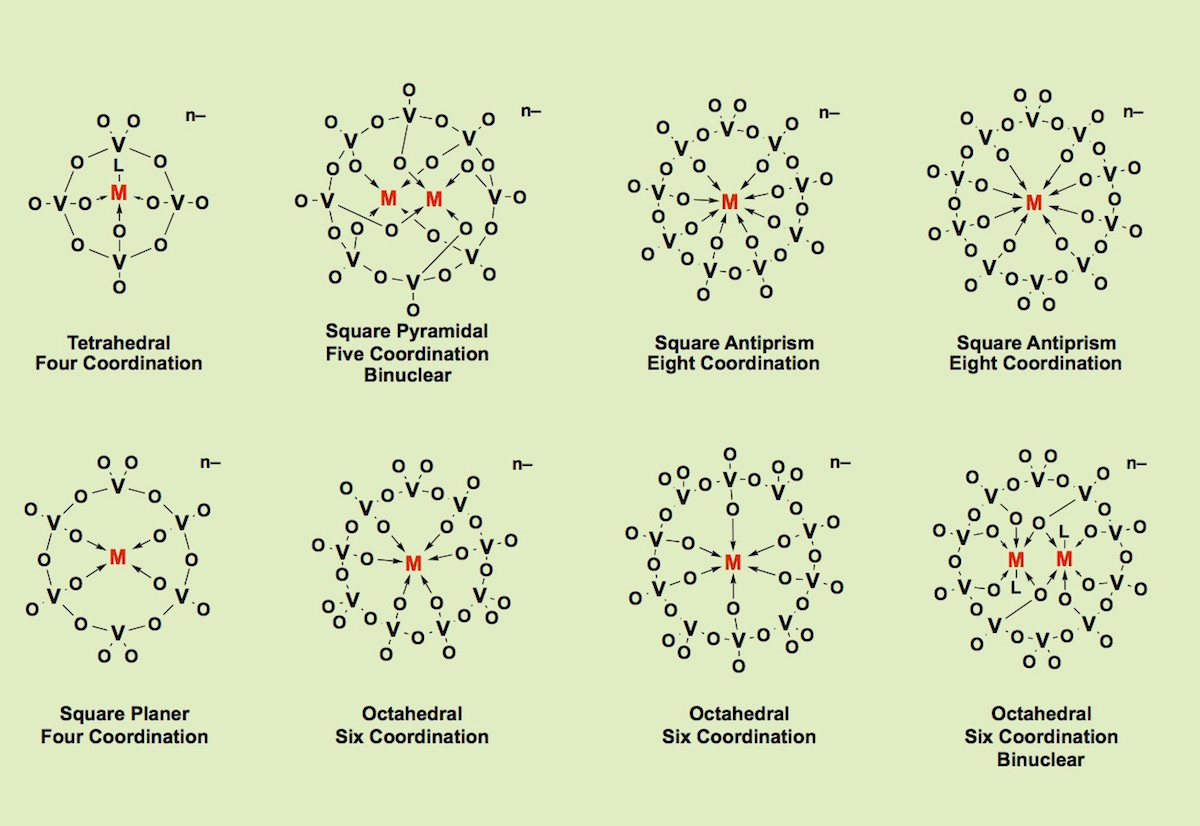All-inorganic Coordination Chemistry by the Macrocyclic Vanadium Oxide Ligands
The solid oxides with an embedded hetero-atom on the surface is considered to be a key local structure for material science that exhibits a variety of useful properties including catalytic activity. For example, precious metals may be embedded on a catalytic converter for car-exhaust. To study such a complex for understanding it from a molecular point of view, we are studying oxide moecules how to incorporate a hetero-atom. That is a development of a heteropolyoxovanadate chemistry. Here, the oxide frameworks work as an inorganic ligand to the hetero-atom, that pararell to the coordination complexes by an inorganic oxide-ligand.The macrocyclic vanadium structures based on VO4 tetrahedra function as a multidentate ligand through the oxygen donor groups like the crown-ether chemistry. All sorts of cationic metals can be incorporated in the ring including, tetrahedral-4-coordination, planer-4-coordination, squarepyramidal-5-coordination, octahedral-6-coordination and square-antiprismatic-8-coordination metal ions. Custamerization of ring sizes as well as a flexible ring conformation allow to accomodate various metal cations with a different ionic radius and a coordinatino mode.

